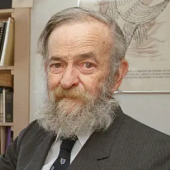The History of Cybersecurity


The history of cybersecurity is a compelling narrative of the continual battle between those seeking to exploit vulnerabilities and those working tirelessly to defend against cyber threats. From pioneering researchers to skilled hackers, this story is filled with unlikely heroes and daring adversaries who have pushed the boundaries of technology and security.
By exploring this history, we gain valuable insights into the creative minds, landmark events and hard-learned lessons that have shaped today’s cybersecurity landscape.
What is cybersecurity?
Cybersecurity is the practice of protecting computers, networks, programs and data from unauthorized access, misuse or cyber attacks. In our digital age where so much of our lives and critical systems rely on technology, cybersecurity has become an essential line of defense.
Effective cybersecurity measures are crucial, from safeguarding personal information like credit card numbers and passwords to securing government databases and corporate trade secrets. Malicious actors like hackers, cybercriminals and even nation-states continually look for vulnerabilities to exploit for financial gain or other nefarious purposes.
Robust cybersecurity protocols and tools help prevent data breaches, identity theft, system failures and other devastating consequences of successful cyber attacks. As technology rapidly evolves, so do the cyber threats we face, making cybersecurity an ever-evolving, vital practice for protecting our digital lives and assets.
Timeline of cybersecurity
Here’s a look at the timeline of cybersecurity, emphasizing key milestones, breakthroughs and significant events that shaped the digital security landscape:
1960s and 1970s: The foundational years
The concept of computer security emerged in the 1960s and 1970s, as researchers pioneered ideas that would lay the foundation for secure data transmission. From the first computer viruses to their counterpart solutions, the cybersecurity arms race was on.
1965: Packet switching, proposed by Donald Davies, involves breaking data into smaller units called packets for transmission over networks. These packets can take different routes and are less susceptible to eavesdropping.

Donald Davies
A Welsh computer scientist who proposed the concept of packet-switching in 1965, which became the foundation for modern computer networking and internet security. His ideas laid the groundwork for secure data transmission.
1969: The U.S. Department of Defense establishes the ARPANET, a precursor to the Internet. While originally intended for research purposes, the ARPANET is the first successful attempt at allowing computers to communicate and share information.
1971: The first computer virus is created. CREEPER is a self-replicating program designed to infect DEC’s PDP-10 computers and display the message “I’M THE CREEPER: CATCH ME IF YOU CAN.” REAPER, the first antivirus, was created to remove CREEPER from infected computers.
Bob Thomas
A pioneering computer scientist regarded as “the father of cybersecurity,” Thomas discovered that computer programs could travel through networks. He developed some of the first security protocols and practices still in use today.

Ray Tomlinson
Tomlinson created the REAPER program, considered the first antivirus software, designed to remove the CREEPER virus from infected systems, ushering in the era of computer security countermeasures.
1976: The Diffie-Hellman key exchange protocol revolutionizes cryptography and secure communication. This protocol allows parties to establish a shared secret key over an insecure channel, paving the way for modern encryption techniques.
1980s: Antivirus era and emerging threats
The 1980s marked the emergence of the antivirus era as computer viruses proliferated. With the introduction of early antivirus software like John McAfee’s VirusScan, efforts to combat emerging threats began, setting the stage for the ongoing battle between cyber defenders and attackers.
1983: The computer hack of ARPANET systems by the 414s hacker group highlights the vulnerability of early computer networks. It also prompts heightened security concerns, spurring organizations to reassess their digital defense strategies.
1987: The Vienna virus, a simple virus that destroys random files, becomes the first virus known to be destroyed by an antivirus program.

John McAfee
A British-American computer programmer who founded the first commercial antivirus software company, McAfee Associates, in 1987, revolutionizing the fight against malware and viruses.
1987: The first commercial antivirus software, developed by McAfee Associates, hits the market. With its release, users gain a vital tool to combat emerging digital threats, marking a significant advancement in creating more secure computer systems.
1988: The Morris Worm, created by Robert Tappan Morris, was a harmless experiment gone wrong that brought vulnerabilities in the early Internet to light. Exact damages are difficult to quantify, but initial figures started at $100,000 and surged well into the millions.

Robert Tappan Morris
An American computer scientist infamous for creating the first computer worm virus in 1988, unintentionally highlighting network security vulnerabilities and earning Morris a place in computer history. He later co-founded several successful technology companies and became a respected figure in computer science.
1990s: Cybercrime and security standards
As the internet gained widespread adoption in the 1990s, the history of cybersecurity entered a new era. The interconnectivity of global networks brought unprecedented opportunities but also introduced new cyber threats. During this period, cybercriminals became increasingly sophisticated, exploiting vulnerabilities in software and systems to gain unauthorized access, steal data and disrupt operations.
1991: The Polymorphic virus emerges, capable of mutating to evade detection and posing a significant challenge to traditional antivirus defenses.
1995: The first version of the Data Encryption Standard (DES) is adopted for securing electronic communications, marking a milestone in cryptography and laying the groundwork for modern encryption standards to protect sensitive data in the digital age.

Kevin Mitnick
A former hacker known for his high-profile cybercrimes in the 1990s, including wire fraud and computer hacking. His exploits raised awareness about cybersecurity, leading to stricter laws and improved security measures.
1999: The Melissa virus, created by David Lee Smith, surges across the internet and earns notoriety as the fastest-spreading infection of its time. It inflicts an estimated $80 million in damages, compelling organizations to invest heavily in cleanup and repair efforts to mitigate its widespread impact on affected computer systems.
2000s: Cyber attacks and compliance
In the 2000s, cybersecurity faced a surge in cyber attacks, prompting organizations to prioritize compliance with regulations and standards. The era saw a rise in high-profile breaches, highlighting the importance of robust security measures to protect sensitive data.
2000: The “Love Bug” virus spreads globally, causing billions in damages and spurring improved security measures.
2001: The Code Red worm exploits a vulnerability in Microsoft’s IIS web servers, leading to widespread disruption of internet services. This incident prompts a concerted effort to enhance software security and develop more robust patch management practices to prevent similar exploits in the future.
2003: The SQL Slammer worm targets a vulnerability in Microsoft’s SQL Server database software, causing significant disruption to internet services. In response, organizations prioritize database security measures to mitigate the risk of exploitation by cybercriminals.
2006: The HIPAA and PCI-DSS compliance regulations are established. Aimed at safeguarding sensitive healthcare and financial data, respectively, these regulations drive widespread adoption of cybersecurity measures in the healthcare and finance sectors.
2010s: Cloud security and state-sponsored threats
The 2010s saw a shift towards cloud computing, prompting heightened emphasis on cloud security measures. Simultaneously, there was a rise in state-sponsored cyber threats, emphasizing the need for collaborative efforts to defend against evolving digital challenges.
2010: The emergence of the Stuxnet worm targets industrial control systems, showcasing the risks associated with cyber warfare.
2013: The Target data breach exposes 40 million credit cards, underscoring the need for better retail cybersecurity. This incident emphasized the pressing requirement for retailers to invest in robust cybersecurity measures to protect sensitive customer information.

Edward Snowden
An American computer professional and former CIA employee who, in 2013, leaked highly classified information from the National Security Agency. He exposed global surveillance programs and sparked debates around privacy, government overreach and the balance between national security and civil liberties in the cybersecurity realm.
2017: The WannaCry and NotPetya ransomware attacks wreak havoc globally, targeting thousands of organizations across multiple sectors and causing billions of dollars in damages.
The 2020s: AI, quantum computing and beyond
In the 2020s and beyond, cybersecurity rapidly evolved to combat escalating cyber threats. Innovations like AI-driven threat detection and quantum-resistant cryptography emerged to bolster defense strategies. Collaboration between industry, government and academia is crucial in safeguarding digital assets amidst evolving threats.

Parisa Tabriz
An American computer security expert who currently serves as the head of information security at Google. Tabriz has contributed significantly to browser security, vulnerability research and promoting diversity in cybersecurity.
2022: ChatGPT showcases the potential of AI in cybersecurity for threat detection and response. This milestone showcased AI’s ability to augment human capabilities, enabling more efficient and effective cybersecurity practices.
2023: Quantum-resistant encryption algorithms are developed to prepare for the advent of quantum computing. Designed to withstand the cryptographic vulnerabilities that quantum computers could exploit, these algorithms ensure the continued security of sensitive data in the face of rapidly advancing technology.

Katie Moussouris
The founder and CEO of Luta Security, a company that specializes in vulnerability coordination and bug bounty programs. Moussouris is a pioneer in the field of vulnerability disclosure and has played a crucial role in bridging the gap between ethical hackers and organizations.
Ongoing: The integration of AI, machine learning and emerging technologies continues to shape the future of cybersecurity. AI-driven threat detection systems, combined with advancements in areas like behavioral analytics and anomaly detection, enhance organizations’ ability to detect and mitigate cyber threats in real time. This ongoing evolution underscores the importance of leveraging cutting-edge technologies to stay ahead of increasingly sophisticated cyber adversaries and protect digital assets effectively.
Shape a secure digital future with cybersecurity training
The history of cybersecurity serves as a reminder of the ongoing need for vigilance, innovation and collaboration in the face of constantly evolving cyber threats. By understanding the lessons of the past and embracing the latest advancements in cybersecurity, we can better prepare for the challenges that lie ahead.
Do you want to be a part of the next chapter in the history of cybersecurity? Explore Maryville University’s online cybersecurity programs. With online bachelor’s in cybersecurity and master’s in cybersecurity degrees available, you can be part of making our future safer.

